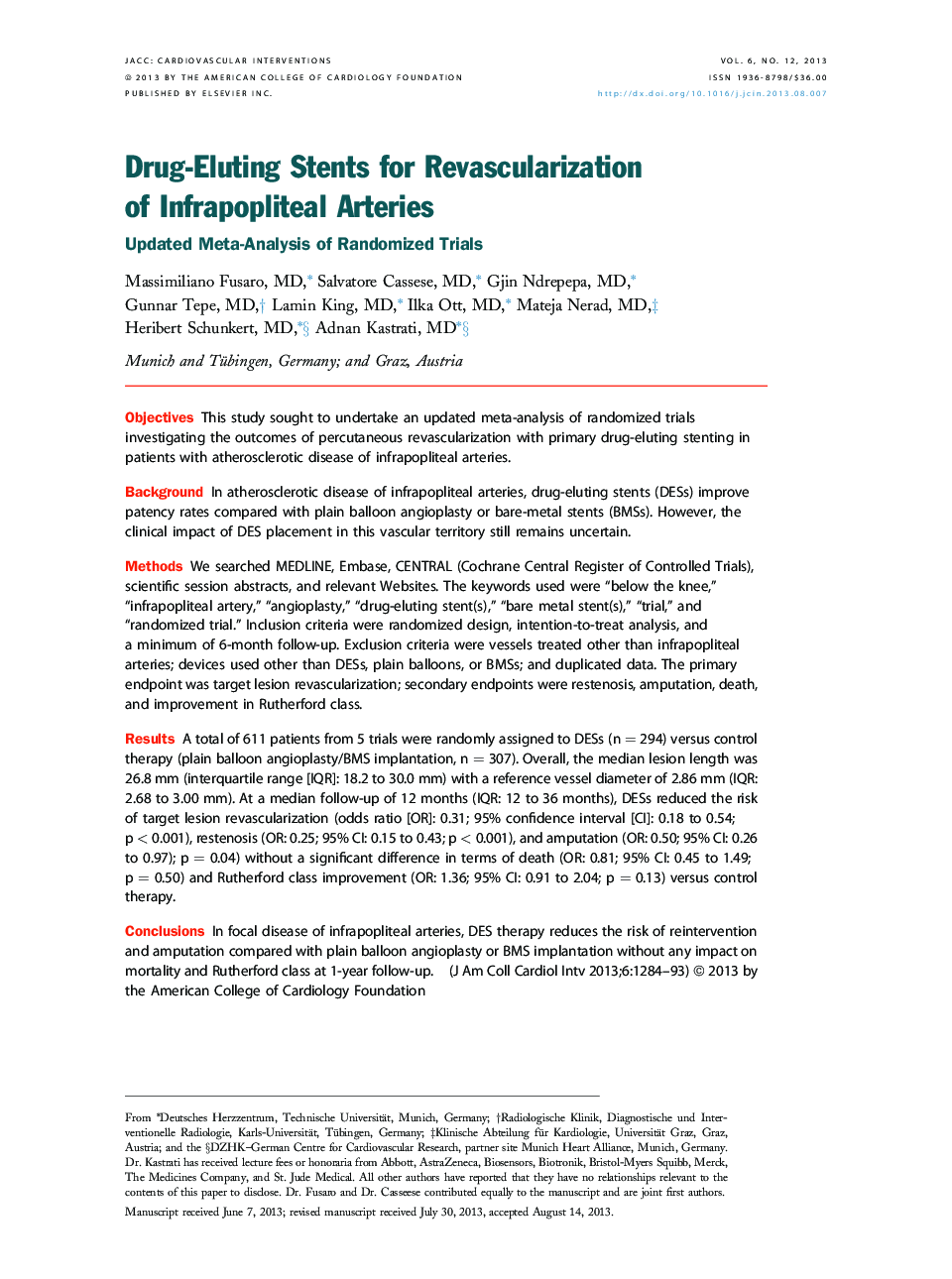| Article ID | Journal | Published Year | Pages | File Type |
|---|---|---|---|---|
| 2940409 | JACC: Cardiovascular Interventions | 2013 | 10 Pages |
ObjectivesThis study sought to undertake an updated meta-analysis of randomized trials investigating the outcomes of percutaneous revascularization with primary drug-eluting stenting in patients with atherosclerotic disease of infrapopliteal arteries.BackgroundIn atherosclerotic disease of infrapopliteal arteries, drug-eluting stents (DESs) improve patency rates compared with plain balloon angioplasty or bare-metal stents (BMSs). However, the clinical impact of DES placement in this vascular territory still remains uncertain.MethodsWe searched MEDLINE, Embase, CENTRAL (Cochrane Central Register of Controlled Trials), scientific session abstracts, and relevant Websites. The keywords used were “below the knee,” “infrapopliteal artery,” “angioplasty,” “drug-eluting stent(s),” “bare metal stent(s),” “trial,” and “randomized trial.” Inclusion criteria were randomized design, intention-to-treat analysis, and a minimum of 6-month follow-up. Exclusion criteria were vessels treated other than infrapopliteal arteries; devices used other than DESs, plain balloons, or BMSs; and duplicated data. The primary endpoint was target lesion revascularization; secondary endpoints were restenosis, amputation, death, and improvement in Rutherford class.ResultsA total of 611 patients from 5 trials were randomly assigned to DESs (n = 294) versus control therapy (plain balloon angioplasty/BMS implantation, n = 307). Overall, the median lesion length was 26.8 mm (interquartile range [IQR]: 18.2 to 30.0 mm) with a reference vessel diameter of 2.86 mm (IQR: 2.68 to 3.00 mm). At a median follow-up of 12 months (IQR: 12 to 36 months), DESs reduced the risk of target lesion revascularization (odds ratio [OR]: 0.31; 95% confidence interval [CI]: 0.18 to 0.54; p < 0.001), restenosis (OR: 0.25; 95% CI: 0.15 to 0.43; p < 0.001), and amputation (OR: 0.50; 95% CI: 0.26 to 0.97); p = 0.04) without a significant difference in terms of death (OR: 0.81; 95% CI: 0.45 to 1.49; p = 0.50) and Rutherford class improvement (OR: 1.36; 95% CI: 0.91 to 2.04; p = 0.13) versus control therapy.ConclusionsIn focal disease of infrapopliteal arteries, DES therapy reduces the risk of reintervention and amputation compared with plain balloon angioplasty or BMS implantation without any impact on mortality and Rutherford class at 1-year follow-up.
